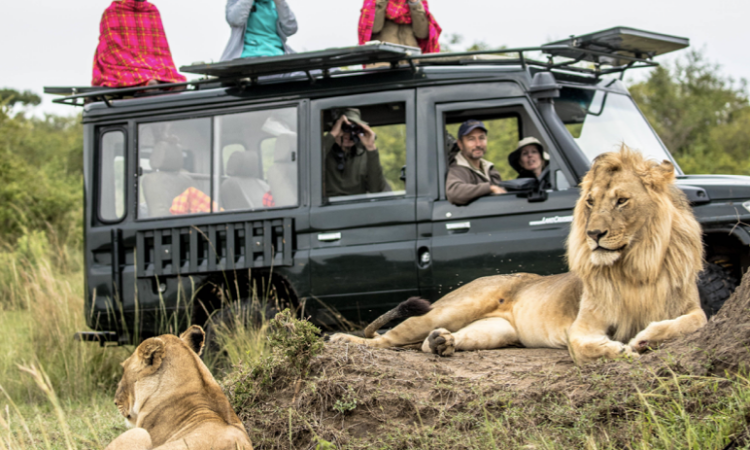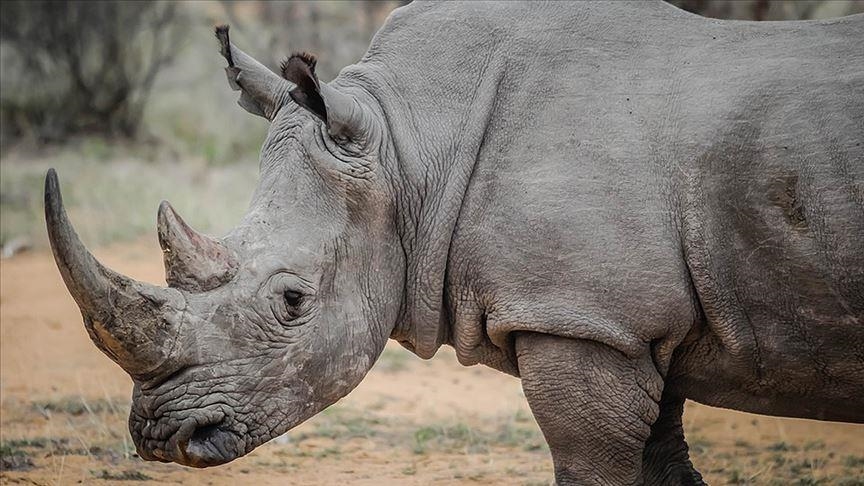Discover the Big Five in the Masai Mara : The Maasai Mara is among Africa’s premier wildlife sanctuaries—and, of course, a dream destination for every nature lover. It’s famous for hosting the wildebeest migration together with the Tanzanian side, Serengeti National Park. Besides the Great Migration, the Masai Mara boasts an incredible population of the Big Five. If you’re not familiar with these big games, this article is for you.

What are the Big Five?
Back in the day, old-school hunters coined the term “Big Five” for animals that were difficult to hunt. They include lions, leopards, elephants, buffalos, and black rhinos. This has nothing to do with their size. Luckily, these animals are not hunted today, but they make stunning photographs for avid photographers. And that’s why giraffes do not make this list. The Big Five animals are Africa’s top attractions. In Kenya, the Masai Mara National Reserve hosts all the Big Five animals. We’ve had a glance at the Big Five animals.
Lion (Panthera leo)
The lion has its reputation in the African jungle. It’s usually terrifying and strong. These grand animals are social and often live in a pride mainly made of related females, their cubs, and one to three males. The females usually do the hunting, working together to bring down large prey. Their favorite prey are wildebeest and zebra. They also predate warthogs and buffalos. The powerful males are often seen simply lounging around, guarding the pride’s territory—and of course, lions are territorial.
There are 850 to 900 lions in the Masai Mara and surrounding conservancies. Nothing is more amazing than, like, watching a pride of lions on the hunt or just simply playing with the cubs as a reminder of both their power and beauty. It’s in the Masai Mara where you’ll find the world-famous ‘Marsh Pride’ featured in the BBC’s Big Cat and Dynasties.
Leopard (Panthera pardus)
The other member of the Big Five is the leopard, an elusive cat and stealthy predator. These solitary hunters are perfectly adapted to the varied landscapes of the Maasai Mara, from open savannahs to dense acacia woodlands. The spotted coats are great in camouflage and can blend into their surroundings without showing signs of their presence.
Leopards can climb up trees. They use this ability to drag their kills into trees to avoid scavengers like hyenas, wild dogs, and birds. Leopards have a unique hunting technique. They stalk their prey for the time being and ambush it. During the day, leopards stay up in trees to avoid insects, hide, and cool off. Sightings are very common during late evenings or early mornings. Their presence in the Masai Mara is quiet as they assist in controlling the population of antelopes—the favorite prey.
Rhinoceros (Rhinocerotidae)
Kenya is an incredible nation hosting both white and black rhinos. You have a better chance of seeing the white rhino (especially near Lake Nakuru) than its black sibling. An interesting fact about these two species is that there is a small difference in their coat color. The black rhino is not black. This color may have resulted from blackish coloration after wallowing in the mud.
Around 35 to 50 black rhinos occur in the Masai Mara. For better sightings of this endangered animal, visit the Mara Triangle area. The population is impressive, though it is hard to encounter them on a game drive. Be careful when you come close to this giant mammal. They have poor vision and may charge anything moving (rarely safari vehicles).
The black rhinos are solitary, and usually, they live in shrubs. The strongest bond is between the mother and her calf. Males usually prefer staying alone.
The reason the rhino population stumbled in Africa is poaching. These historical mammals are paying a heavy price for their precious horns. They were at the edge of extinction thanks to conservation efforts employed.

Elephant (Loxodonta Africana)
Elephants are very common in the Masai Mara. You can see these gray giants throughout the reserve. Elephants are the gentle giants of the savannah, and it is a great thing to see. They live in clans of up to 70 elephants under the control of a matriarch. This old female cares for the group and is responsible for searching for food and water. Adult males prefer staying alone. They sometimes form bachelor herds.
Elephants in the Maasai Mara suffered serious poaching in the past. Currently, the population has significantly improved. Elephants are architects of the wildlife ecosystem. They spread seeds, make waterholes, as well as trim the vegetation. Imagine seeing a herd of 50 elephants roaming in the plains or a young elephant pampering to catch up with the herd. It’s a thrilling experience.
Buffalo (Syncerus caffer)
This is a wild cow weighing approximately 800 kilograms. It’s one of the most dangerous animals. Lone males are often terrifying and more aggressive. Watch for these wild bulls with special care. Females have strong ties with their young ones. They are overprotective of their young.
In the Masai Mara, buffalos stay in herds of up to 150 individuals or more. Always drive through the plains or near water sources if you want to encounter this wild cow.
Watching the Big Five is an incredible wildlife safari experience—something worth telling your friends. Besides these games, the Masai Mara boasts a fascinating wildlife population, including wildebeest, zebra, gazelle, giraffe, warthog, and more. Whenever you take a visit to the Masai Mara, there is always something unique worth seeing.


